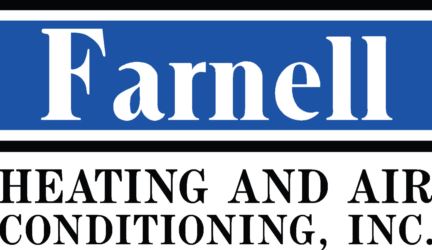
You shouldn’t be forced to compromise on comfort or drain your wallet to keep your residence at a pleasant temperature during summer weather.
But what is the ideal temperature, exactly? We go over recommendations from energy professionals so you can choose the best temp for your loved ones.
Here’s what we suggest for the most energy-efficient setting for air conditioning in Mobile.
Recommended Thermostat Settings for Summer
Most families find setting the thermostat at 72-73 degrees is ideal. However, if there’s a huge difference between your interior and outside temperatures, your electricity expenses will be larger.
This is our advice based on the U.S. Department of Energy (DOE) and ENERGY STAR®.
While at home: 78 degrees. While that seems too high, there are approaches you can keep your house cool without having the air conditioning on frequently.
Keeping windows and curtains closed during the day keeps cold air where it needs to be—within your home. Some window treatments, including honeycomb shades or plantation shutters, are created to deliver more insulation and better energy conservation.
If you have ceiling fans in your house, the DOE says you can raise thermostat temps about 4 degrees higher without giving up comfort. That’s since they cool through a windchill effect. As they cool people, not areas, shut them off when you move from a room.
If 78 degrees still feels too warm on the surface, try running a trial for about a week. Begin by upping your setting to 78 degrees while you’re at your residence. Then, gradually decrease it while adhering to the advice above. You may be astonished at how cool you feel at a warmer temperature setting.
While away: 88 degrees. There’s no rationale for keeping the air conditioner running all day while your residence is unoccupied. Switching the setting 7–10 degrees warmer can save you an estimated 5–15% on your AC expenses, according to the DOE.
When you get home, don’t be tempted to set your thermostat below 78 to cool your home more quickly. This isn’t productive and typically leads to a bigger electricity cost.
A programmable thermostat is a good approach to keep your temp in check, but it requires setting programs. If you don’t use programs, you run the risk of forgetting to raise the set temperature when you go.
If you’re looking for a handy fix, think about installing a smart thermostat. This thermostat works with with your phone, so it knows when you’re at your residence and when you’re out. Then it intuitively changes temperature settings for maximum savings. How much exactly? About $180 annually on heating and cooling, according to ENERGY STAR.
Another benefit of having a smart thermostat? You can use your phone to monitor and change temperature settings from almost anywhere.
While sleeping: Around 70 degrees. While ENERGY STAR suggests 82 degrees, that could be too uncomfortable for the majority of families. Most people sleep better when their bedroom is chilly, so that’s why the National Sleep Foundation advises 60–67 degrees. But that might be too cold, based on your pajama and blanket preference.
We recommend trying a similar test over a week, moving your thermostat higher and progressively lowering it to pick the ideal setting for your house. On pleasant nights, you might discover keeping windows open at night and running a ceiling fan is a better option than operating the air conditioner.
More Ways to Conserve Energy During Hot Weather
There are added methods you can save money on air conditioning bills throughout hot weather.
- Install an energy-efficient AC system. Central air conditioners only work for about 12–15 years and become less efficient as they become older. An upgraded air conditioner can keep your house cooler while keeping energy bills down.
- Schedule annual air conditioner maintenance. Routine air conditioner maintenance keeps your unit running smoothly and could help it run at greater efficiency. It might also help lengthen its life span, since it enables techs to pinpoint small problems before they cause a major meltdown.
- Replace air filters often. Use manufacturer instructions for replacing your air filter. A dirty filter can result in your system short cycling, or run too often, and increase your cooling.
- Inspect attic insulation levels. Nearly 90% of residences in the United States don’t have adequate insulation, according to the Insulation Institute. The majority of southern climates should have 13–14” of attic insulation, while northern climates should have 16–18”.
- Have your ductwork inspected. Ductwork that has come apart over time can leak cool air into your attic, walls or crawl space. This can lead to big comfort issues in your residence, like hot and cold spots.
- Seal holes, doors and windows. Keep warm air where it belongs by sealing openings. You can also caulk or weather strip doors to seal more conditioned air indoors.
Use Less Energy This Summer with Farnell Heating & Air Conditioning Inc
If you are looking to conserve more energy during hot weather, our Farnell Heating & Air Conditioning Inc pros can provide assistance. Reach us at 251-471-2674 or contact us online for additional details about our energy-saving cooling products.
